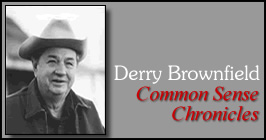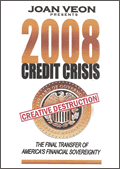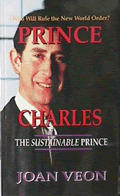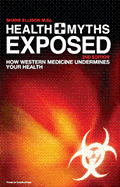CORN THAT’S AS HIGH AS AN ELEPHANT’S EYE
By
Derry Brownfield
November 29, 2008
NewsWithViews.com
Ever since my name appeared in the April 30th edition of CORPORATE CRIME REPORTER for airing provable facts about how Monsanto deals with its customers, I have been receiving plain envelopes with no return addresses containing copies of everything Monsanto sends or delivers to the farmers involved. Not all the letters sent to farmers involves subpoenas, court dates or computers. In March farmers received a letter with the greeting “Dear Valued Customer,” signed by Jim Zimmer, one of Monsanto’s Vice Presidents. Mr. Zimmer’s letter was to “discuss current marketplace dynamics that will directly affect you in terms of increased prices for Monsanto’s line of Roundup herbicides.”
When Monsanto’s patent on glyphosate ran out, other companies began making a product to compete with Roundup. Mr. Zimmer’s letter explained that the demand for glyphosate is at an all time high. The letter states, “we have seen the demand for Roundup brand herbicide increase more than our ability to supply. Our competitive challenges have put our commitment at risk, forcing us to increase our price for Roundup herbicide.”
My college economics professor taught me all wrong. I was taught that to compete with another company you had to “LOWER” prices and provide “MORE” service or “BETTER” quality. Since Monsanto’s service still includes suing farmers and I don’t believe Roundup kills weeds any better than it ever did, so in order to compete, the only alternative is to “RAISE” prices.
Seems that Monsanto has a knack for “RAISING” prices. A bag of Monsanto’s GMO triple stacked seed corn is going to cost $300 next spring. A bag of corn seed contains 80,000 kernels which will plant approximately three acres. At that rate the seed alone is costing $100 per acre. The first farm I bought cost me $50 an acre and I purchased it in early fall and the corn crop that was about ready to harvest was included in the sale. Maybe I’m still living in the 1950’s but I cannot imagine a bag of seed corn costing as much as 100 bushels used to sell for. I know this is the 21st century and inflation has been running rampant, but $100 an acre seems ridiculous!
Earlier this summer I attended a meeting sponsored by the Organization For Competitive Markets (OCM), and the entire meeting was to expose Monsanto’s practices involving the farmers that use the companies products. One of the speakers explained how he heard one of Monsanto’s executives discuss the company’s price setting plan. He said we must pass the “red face” test. In other words, can we jack up prices that much and still keep a straight face?
Matthew Dillon, writing in OCM’s August publication states, “Over the last several years Monsanto has been very clear in their marketing strategy; develop deep market penetration in field crops before ratcheting up prices to the highest possible level for the highest possible profit. In order to find the truth in their strategy you have to look to what they tell their larger investors. Monsanto and their executives’ fortunes are linked to happy investors, not happy farmers! Monsanto has control of over 70% of the corn. They have curtailed competition via licensing agreements and so are able to make pricing decisions without concern that their customers will go elsewhere. Their investors will go elsewhere if the returns don’t stay high. That’s what drives the pricing structure.”
This past June, Goldman Sach’s predicted a 20% increase in Monsanto corn prices, stating: “We derive a theoretical price hike of approximately $6 per acre. It is possible Monsanto could become more aggressive by using a higher commodity price in its calculations. Higher price and greater profit equals happy investors. Since the news of the 2009 increase, several major investment firms have put Monsanto back on the “BUY” list, pointing specifically to the increase. Soon after the price quotes for the 2009 crop became known, Monsanto stocks began moving upward.”
|
Subscribe to the NewsWithViews Daily News Alerts! |
To put these prices in perspective, let’s look back a few decades. The last year I planted either corn or soybeans was 1965. In the spring of 1966 I sowed all my row crop land in grass, because there hadn’t been any profit in growing corn since the late 1940’s. I started my radio network in 1972, the same year farm commodities improved. Soybeans topped $12 a bushel and the price of a new automobile was only $3,l00. Today farmers in Iowa and Illinois are paying over $200 an acre just to rent corn and soybean ground, diesel fuel is costing $4 a gallon and fertilizer expenses are greater than the land was valued at 25 years ago. I stopped growing corn 42 years ago because I didn’t think it was profitable. With today’s production expenses, the only way I can see a farmer turning a profit is to not buy seed corn, fuel or fertilizer, but instead purchase shares in MONSANTO Corporation.
� 2008 Derry Brownfield - All Rights Reserved









